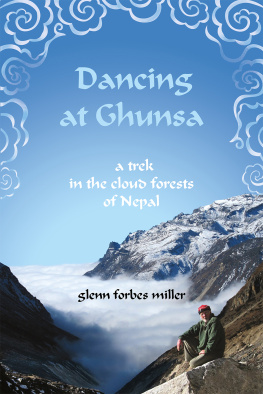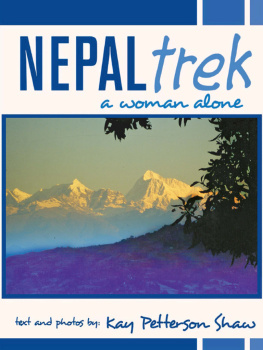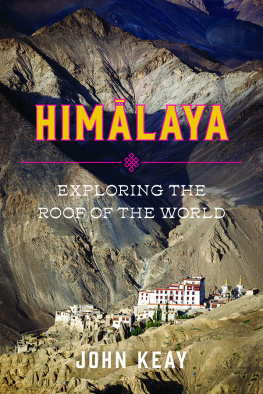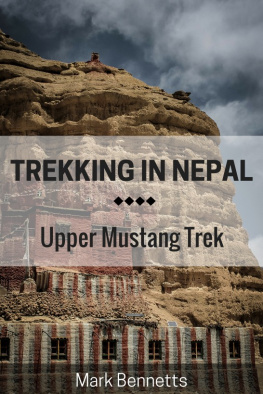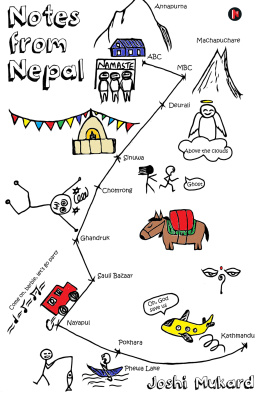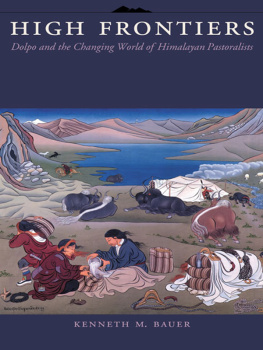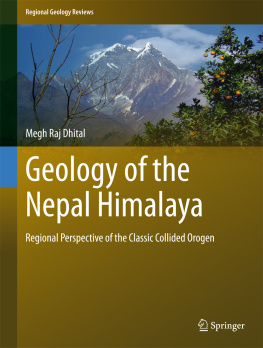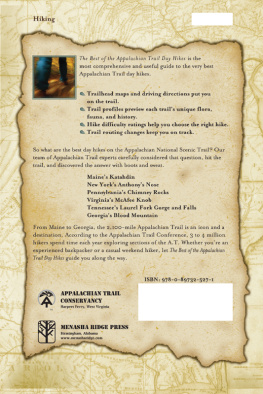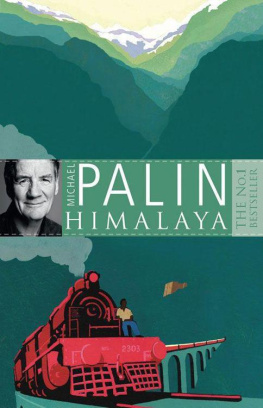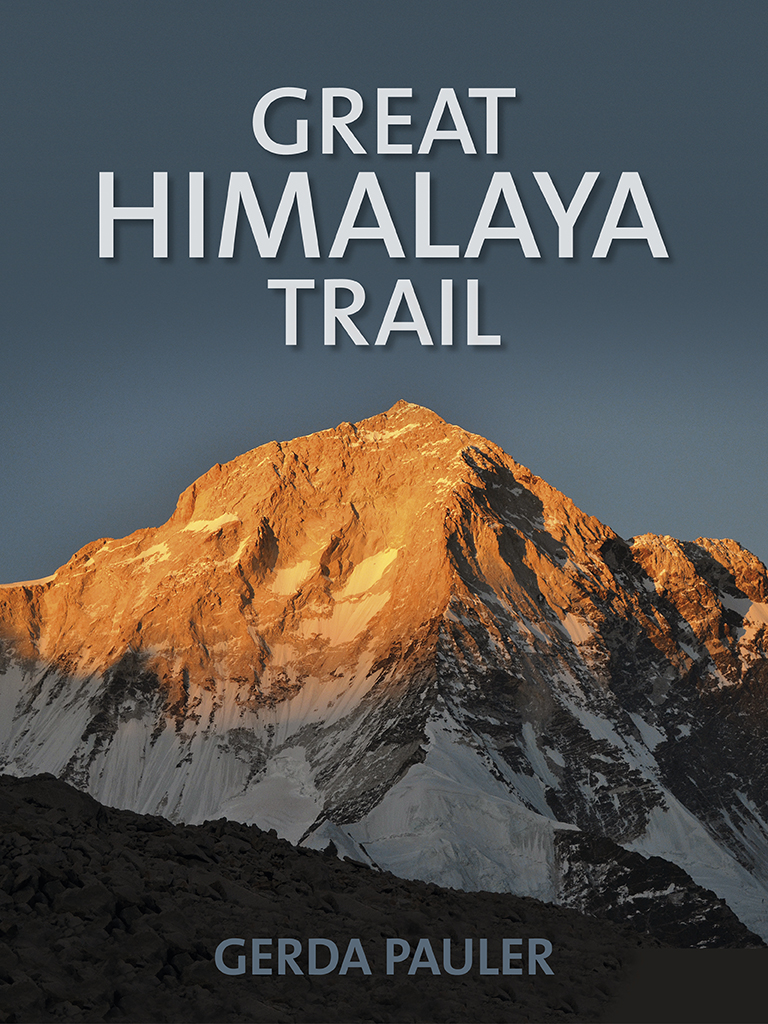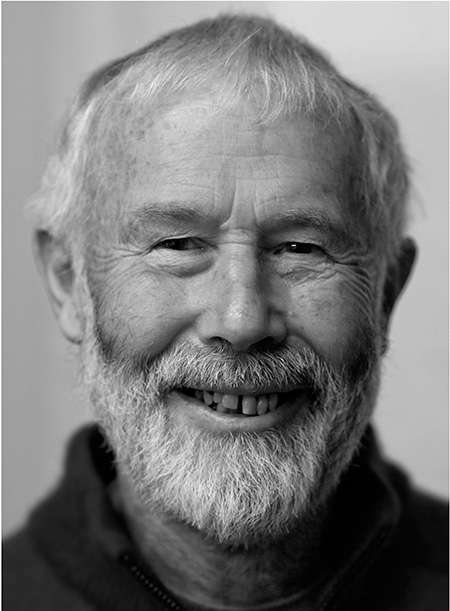Foreword
Virtually on an impulse Gerda Pauler planned, organised and completed a walk of a lifetime. At the age of fifty-five, she set off from Kathmandu, by bus, to Taplejung, walked to the Kangchenjunga Base Camp, and from there started a 1,750 kilometre-long walk along the high-level route known today as the Great Himalaya Trail. Sometimes with Nepali support staff, much of it alone, she crossed two snow-covered passes over 6,000 metres and sixteen more between 5,000 and 6,000 metres high. She experienced cold, wind, snow storms, rain and extreme heat and geographical variation from jungle, through alpine landscapes, to snow, ice and wind-swept high mountain deserts. The walk took four months to complete.
A Nepal veteran with a number of visits, she says: I came for the mountains but I return for the people. So too here; she met a cross section of the people who live in this Himalayan land we all love so dearly but more than that, she started on the United Nations World Autism Day and used the trip to raise awareness around the subject of autism in Nepal. Autism is a difficult and demanding condition for those who suffer from it, and for their families; even more so in a developing country like Nepal.
Gerda gave up her job, met all her own expenses, and along the way (via the internet) raised over seven Nepali Lakh (9,000 USD) enough to finance the training of two Nepali health workers in the field of autism. Once trained these two health workers, together with Autism Care Nepal, will provide training and support for other social, health and education personnel in this field. Gerdas organising ability and strength of determination, along with her dedication to a cause and her low profile manner, have always impressed me. Her book is not about her, but about this trip, across the roof of the world, done both for her own pleasure and for those who suffer from autism.
Buy the book, read it, ponder on her words, and like her enjoy the walk along the Great Himalaya Trail.
Sir Chris Bonington
Sir Chris Bonington.
Stuart Walker, Chris Bonington Picture Library.
How it Started
I have been asked many times where the somewhat crazy idea of walking 1,700 kilometres across Nepal came from. All I can say is that I do not remember, but I suppose that different components came together and this plan was the result.
In 2011 the Chinese authorities closed Tibet once again and my planned cycle trip from Tibet to Nepal had to be cancelled. I was incredibly frustrated. What to do? Where to go? I had no idea. Still frustrated, I started surfing the wide and mystic world of the internet. Links led to new links, and I ended up on a page mentioning the Great Himalaya Trail (GHT). To me it sounded like The Holy Grail and Shangri-La all rolled in to one, and promised the adventure of a life time.
Several hours later, I switched off the computer but all the pictures, maps, blogs, articles and links had found their way on to the long term memory disc of my brain And, as the delete button was out of order, this could only mean one thing: attention! Potential danger for addiction ahead! I had experienced similar situations before and knew it was already too late. But in order to answer the question, How did it start?, I have to go back a long way in time a couple of decades.
I was born in a small village outside Munich in the late 50s; an only child. Before I started school, my mountain-crazy parents would take me to the Alps whether I wanted to or not. To be honest, I never wanted to, and all I can remember are the blisters caused by heavy boots, allergic itching caused by scratchy woollen socks, traditional knee pants that never fitted properly and my red anorak a colour I hated as a child. Any reason to stay at home was welcomed with enthusiasm and so I developed a great talent for excuses. Going to the mountains was definitely not my cup of tea; I just did not see the point of it. Occasionally, my cousin Reinhold joined us on our holiday trips. Then at least it was less boring, but still these trips were physically demanding which I did not like at all.
At school, my performances at gym lessons were dismal. I was the last one to cross the finish line when we did 100-metre sprints. It was me who stumbled over most of the hurdles and I assume that I resembled a heavy sack of potatoes when doing exercises on the horizontal bar. I simply seemed to lack all the necessary prerequisites for any kind of sport.
And now, almost forty years later, Im toying with the idea of crossing Nepal. Its almost presumptuous.
In general, I was more the dreamer and still am who got lost in time and space when reading books. But contrary to my female classmates, I systematically stayed away from all the pinkish-coloured books for girls. My heart and my soul called for adventure, suspense, exploration and the unknown wilderness. My heroines and heroes were Alexandra David-Neel, Gertrude Bell, Sven Hedin and Heinrich Harrer. They were the ones who provided new ideas for new dreams.
In 1973, I received a very special book as a birthday present. Traumland Nepal (Dreamland Nepal). Within a few minutes I was engrossed in the fascinating world of enchanted lakes, hidden valleys and a mystic culture that was completely unknown to me. All of a sudden I had a new dream: Nepal. I wanted to go there; at any cost.
One year later, at the age of seventeen, I was determined to travel to Nepal. There were regular busses running between London and Kathmandu, and the legendary overland Hippy Trail was a natural source of fascination and envy to many young adventurous people in the West. My motivation was the allure of exotic countries like Turkey, Iran, Afghanistan, Pakistan, India and Nepal. One only had to buy a ticket, jump onto the next bus and a few weeks later one would arrive in Nepal. Of course, I needed some money and thus looking after babies and small children, helping younger pupils with their homework, walking elderly ladies dogs and delivering newspapers in the middle of the night took priority over studying. As a result, I had severe problems at school and finally had to stay back one year. My parents NO was clear and candid.
In 1978, one year after my Abitur (high school examinations) Soviet troops marched into Afghanistan and the scheduled buses were cancelled for good. The dream of great adventures had come to an abrupt end. Years passed, and my life had become pretty normal; building up a professional career and getting married. Was this it? Was this my future? What about all the dreams of adventure, suspense and challenge?
The marriage ended and, after having signed the papers, I more-or-less walked directly from the court to the nearest travel office and bought a ticket to Kathmandu, Nepal.
A friend, who had been to Nepal many times before, suggested a short trek and helped me to plan my trip. Well, why not? I will still have enough time for some culture, I thought and borrowed the necessary equipment from him. Weeks later I stood on top of Poon Hill, north of Pokhara, and upon seeing the breathtaking beauty of the high mountains right in front of me, changed my plans. My culture trip became my first trekking tour.


